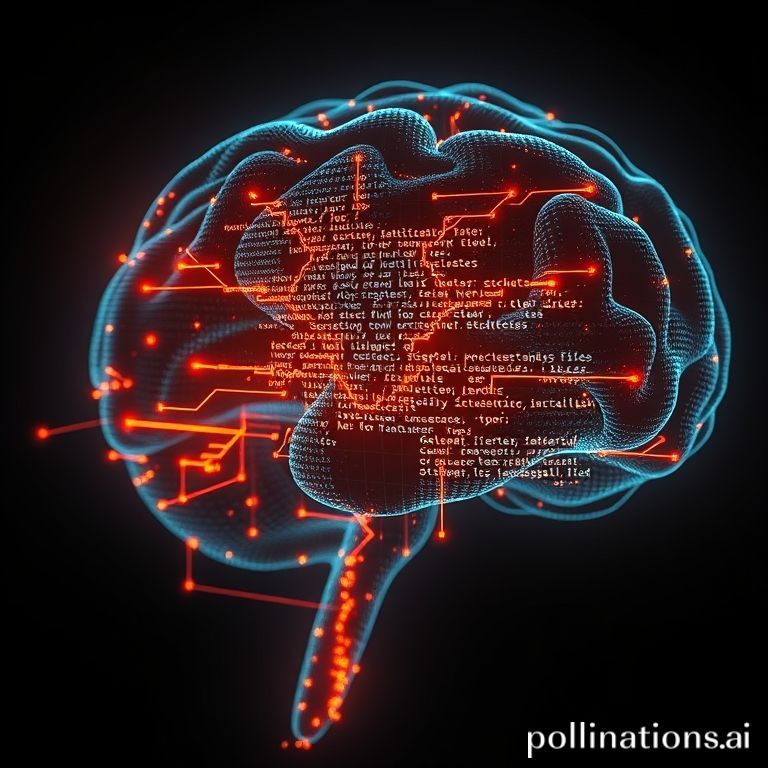Here is the complete, SEO-optimized HTML blog post, crafted with a fun and nerdy tone.
“`html
Technical Report: Your New AI Teammate for Code Documentation
Analysis of developer community chatter reveals a singularity on the horizon: the rise of the AI-powered cybernetic scribe. This report deconstructs the tech that banishes stale docs forever.
The Unseen Nemesis: Why Code Documentation Fails (And Why We Care)
Every developer knows the feeling. You inherit a legacy codebase, find a critical function named `process_data`, and stare into the void. No comments. No docstrings. Just cryptic logic. This is the reality of technical debt, and its primary symptom is documentation decay.
Software documentation is the lifeblood of maintainable projects. It’s crucial for collaboration, onboarding, and simply remembering what your own code does six months later. Yet, it’s often the first thing sacrificed at the altar of tight deadlines.
Traditional methods are manual and fragile. While static analysis can generate basic API skeletons, they miss the most important part: the *intent*. They can’t explain *why* the code exists. This is where a new class of tools, powered by code-fluent Large Language Models (LLMs) like OpenAI’s Codex and Meta’s Code Llama, enters the scene.

Peeking Under the Hood: How AI Writes Your Docs (The Nerdy Deep Dive)
These AI documentation tools aren’t just black boxes. They employ a sophisticated pipeline that fuses classical computer science with cutting-edge deep learning to generate documentation from code.

Step 1: Code Parsing & AST Generation
First, the tool ingests your source code. It doesn’t read it like a human. Instead, it parses it into an **Abstract Syntax Tree (AST)**. Think of the AST as a precise, machine-readable blueprint of your code’s structure, mapping out every function, class, and variable relationship.
Step 2: Semantic Analysis & Contextual Embedding
Next, the system traverses the AST, extracting key components. Each function and its surrounding context are converted into numerical vector embeddings. This crucial step captures the *semantic meaning*, allowing the AI to understand that `calculate_discount` is related to `price`, even if they’re in different files. Techniques like Retrieval-Augmented Generation (RAG) often play a role here, pulling in relevant context from across the entire codebase.
Step 3: LLM-Powered Generation
This is where the magic happens. The extracted context, code snippets, and semantic data are woven into a highly detailed prompt. This prompt is then fed to a fine-tuned LLM. The model, trained on billions of lines of code and text, interprets the prompt and generates a human-like explanation: function purpose, parameter descriptions, return values, and even potential exceptions.
Step 4: Output Formatting
Finally, the raw text from the LLM is cleaned up and structured into a pristine format like Markdown. This output can be seamlessly integrated into your team’s wiki, code editor, or version control system.
From Theory to Terminal: AI Code Documentation in Action
Let’s make this concrete. Imagine you’re faced with this Python function in a legacy e-commerce system:
# --- Input Code ---
def calculate_discount(price, percentage):
if not 0 <= percentage <= 100:
raise ValueError("Percentage must be between 0 and 100")
discount_amount = price * (percentage / 100)
return price - discount_amountAn AI tool like the hypothetical "CodeScribe" would analyze this and instantly generate the following Markdown documentation:
### `calculate_discount(price, percentage)`
Calculates the final price after applying a percentage-based discount.
**Parameters:**
- `price` (float): The original price of the item.
- `percentage` (float): The discount percentage to apply (must be between 0 and 100).
**Returns:**
- `float`: The new price after the discount has been applied.
**Raises:**
- `ValueError`: If the provided `percentage` is not within the valid range of 0 to 100.Pause & Reflect: Think about the time saved. Now multiply that by hundreds of functions in a legacy codebase. The impact on developer productivity is staggering. A recent developer survey suggests teams spend up to 25% of their time just trying to understand existing code.
This automated process is perfect for:
- Legacy Code Archaeology: Breathing life into old, undocumented systems, making them accessible to new developers.
- CI/CD Integration: Integrating into your CI/CD pipeline to ensure documentation is automatically updated with every commit. No more stale docs!
- Flawless API References: Generating detailed, user-friendly documentation for your APIs directly from the source of truth—the code itself.
The Ghosts in the Machine: Challenges and Limitations
While the promise of automated code documentation is immense, this technology is not a silver bullet. There are still some ghosts in the machine to be wary of:
- Logical Ambiguity: For highly complex or domain-specific algorithms, the AI can sometimes misinterpret the business logic, leading to subtle but critical inaccuracies.
- The Context Chasm: LLMs have a finite context window. For a function that relies on a sprawling web of dependencies, the AI might miss crucial context from outside its view, affecting doc quality.
- Code Custody Concerns: Using a cloud-based AI tool means sending your proprietary source code to a third party. This is a non-starter for organizations with strict security and privacy requirements.
- Configuration Overload: Getting the AI to match your team's specific documentation style, tone, and format can require significant initial configuration and fine-tuning.
The Horizon Protocol: What's Next for AI Scribes?
The field is evolving at a breakneck pace. Here's a glimpse of what's on the horizon for AI code documentation:
- Real-time IDE Integration: Imagine documentation appearing and updating in your editor, line by line, as you type. This will shift documentation from an afterthought to an integral part of the coding process.
- Multimodal Explanations: The next generation of tools won't just write text. They'll generate flowcharts, sequence diagrams, and other visuals to explain complex code logic.
- Self-Improving Systems: Future models will learn from developer edits. When you correct a piece of generated documentation, the AI will use that feedback to improve its accuracy and style over time.
FAQ: Your Questions on AI Code Documentation Answered
-
Can AI completely replace human developers for writing documentation?
Not yet. AI is an incredibly powerful assistant for generating baseline documentation and handling boilerplate. However, human oversight is still critical to verify accuracy, add nuanced business context, and ensure the documentation meets specific project standards.
-
What is the difference between an AST and what an LLM does?
An Abstract Syntax Tree (AST) is a structured, hierarchical representation of the code's syntax. It's a deterministic map of the code. An LLM, on the other hand, is a probabilistic model that understands the semantic meaning and context behind the code, allowing it to generate natural language descriptions.
-
Are there open-source AI code documentation tools?
Yes, the ecosystem is growing. Many projects leverage open-source models like Meta's Code Llama. These can often be self-hosted, which addresses the security and privacy concerns associated with cloud-based services.
```


